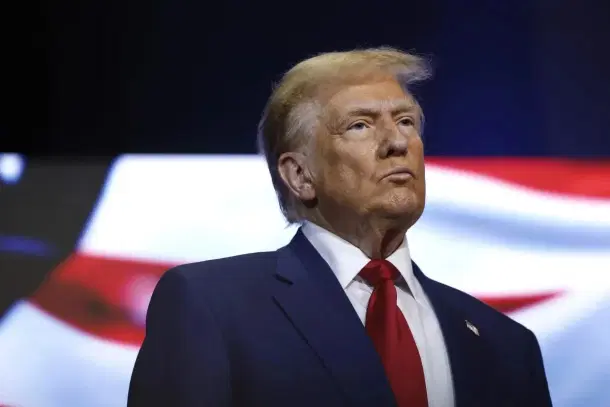World
‘Total Disaster’: Trump Rages After US Federal Court Rules Most Of His Global Tariffs Are Illegal
Swarajya Staff
Aug 30, 2025, 08:59 AM | Updated 10:52 AM IST
Save & read from anywhere!
Bookmark stories for easy access on any device or the Swarajya app.


A US federal appeals court has ruled that most of President Donald Trump’s sweeping global tariffs are illegal, triggering a rapid push by the White House to keep the levies in place and appeal to the Supreme Court.
In a 7–4 decision, the US Court of Appeals for the Federal Circuit held on Friday (29 August) that Trump exceeded his authority under the International Emergency Economic Powers Act (IEEPA) when he imposed reciprocal, across-the-board tariffs on scores of US trading partners.
The Court held that the law Trump invoked when he granted his most expansive tariffs — including his “reciprocal” tariffs — does not actually grant him the power to impose those levies.
"The core Congressional power to impose taxes such as tariffs is vested exclusively in the legislative branch by the Constitution," the Court said.
"Tariffs are a core Congressional power," it added.
The panel affirmed a lower trade court’s finding but left the tariffs in place until 14 October to allow the administration to seek emergency relief from the Supreme Court.
Trump later Friday attacked the appeals court as “Highly Partisan” and asserted that the Supreme Court will rule in his favor.
Trump called the potential removal of the levies a “total disaster for the country".
“If these Tariffs ever went away, it would be a total disaster for the Country,” Trump wrote in a Truth Social post.
“If allowed to stand, this Decision would literally destroy the United States of America," he added.
What the court said
The majority found that IEEPA does not give the president open-ended power to impose broad, indefinite tariffs absent clear congressional authorization, invoking the “major questions” doctrine to stress limits on unilateral executive action.
Dissenting judges argued the statute could support Trump’s approach, but the ruling stands unless overturned by the Supreme Court.
What stays — and what doesn’t
Staying for now: The contested IEEPA-based “reciprocal” tariffs remain in effect through 14 October pending a likely Supreme Court appeal.
Not covered: Tariffs rooted in other laws — notably Section 232 (national security steel/aluminum) and Section 301 (China) — are not directly affected by Friday’s ruling.
Why this matters
The decision is the biggest legal blow yet to Trump’s effort to reset US trade policy via sweeping import taxes, with implications for partners including Europe, Japan, Canada, Mexico and others hit by the global measures.
Markets and businesses now face a new round of uncertainty as the Trump administration races to the Supreme Court and explores fallback authorities to preserve parts of the tariff regime.
The politics and the path ahead
The White House framed the ruling as judicial overreach and is preparing an emergency application to the Supreme Court.
Trade lawyers say the administration could try to re-paper tariffs under different statutes, but that would invite fresh litigation and diplomatic pushback.
Please click here to add Swarajya as your preferred and trusted news source on Google.





